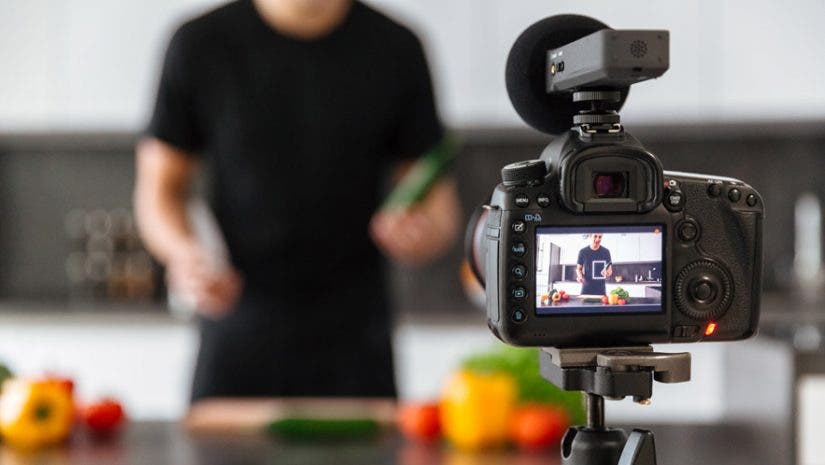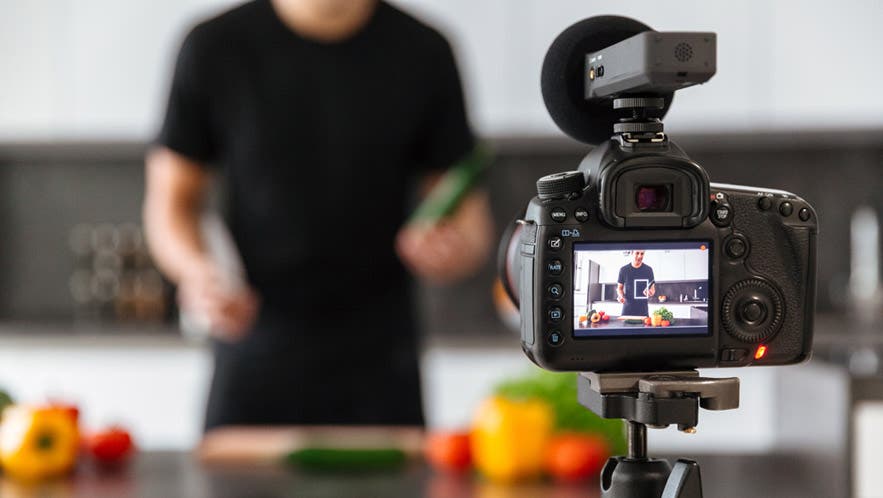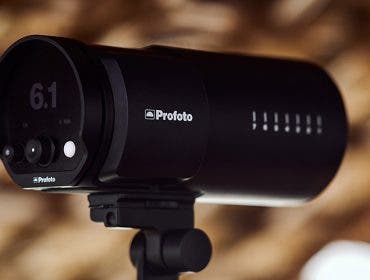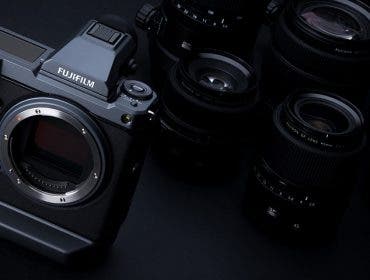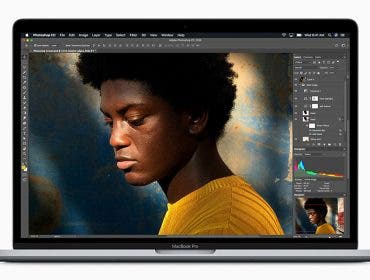Short recipe videos are all the rage on social media. They serve as a visual guide to creating scrumptious dishes that every foodie would want to try at home. Take Buzzfeed’s Tasty, which originated the mobile-first, bird’s-eye view food videos. And it instantly turned into an internet sensation.
With the right gear and the proper techniques, you can also create your own viral-ready food videos. But unlike food photography (which you might be more familiar with), food videos require a different approach.
What Makes Food Videos Different from Food Photos?
Before we delve into the of creating an awesome recipe video, you’ll need to know what makes food videography different from its static counterpart.

Movement/Action
Picture steam rising from a dish or bubbles boiling in a pot of soup. These actions make videos different, and you can use them to tell a compelling story.
Time
Whether time is sped up to show the finished product or slowed down to emphasize preparation, time plays an integral part in the cooking process. Likewise, real-time food preparation methods can be interesting to watch.
Audio
Cooking sounds, like sizzling steak, chopping vegetables, or even voice-overs, can make or break your story. Sometimes, even background sounds can paint a broader picture than the visuals — think kitchen timers going off and whistling teapots.
Creating Recipe Videos
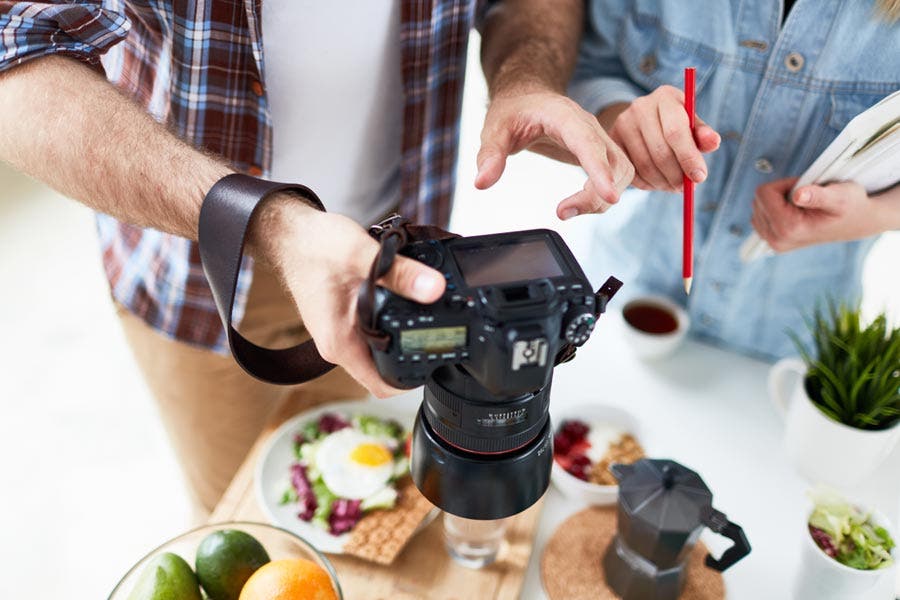
Follow a Doable Recipe
If the goal of your video is to entice viewers to click through to your site after watching your video on Facebook or Instagram, you’ll need a short yet catchy video. So err on the simpler side of the culinary spectrum and follow an easy-to-cook recipe for better engagement.
Take Advantage of Natural Light
Instead of shining your subject directly with a spotlight and casting darker, film-noir shadows, use natural lighting for your food clip. Your goal is to make your food and ingredients visible without looking shadowed or washed out.
Shoot in Different Angles
It’s already too common among food videographers to take close-up shots. Liven things up and experiment with different shot sizes and angles (or with props and lighting). This way, you’ll have more shots to choose from when editing to make your video look more exciting.
Use Colors to Create a Mood
Distinct color palettes leave a strong impression — and complementary colors are key. So arrange your ingredients in a way that creates contrast or makes them complement one another. Paying attention to color can also set the mood and help viewers interpret tastes and smells better.
Film in a Clean Workspace
An uncluttered area will complement the visual appeal of your video. Enhance the instructional value for your video by filming in a clean space with minimal distractions.
Must-have Camera Gear for Impressive Food Videos
Start impressing viewers with a well-shot food video using the right camera equipment. Below we’ve compiled a list of equipment that will come in handy the next time you work on a recipe video.
Cameras
Canon EOS R5
It’s easy to make food videos shine with the feature-packed Canon EOS R5, which includes a powerful 8K recording option (at up to 29.97 fps) and 4K for up to 119.9 fps. The EOS R5 comes with five-axis in-body image stabilization, ensuring your handheld shots are smooth as can be. And, with a 45 megapixel sensor, you can rest assured your images will be just as stellar as those food videos.
Nikon Z 7II
Another great piece of gear for food videos is the Nikon Z7II mirrorless camera. This innovative camera offers 4K UHD video at up to 60p—perfect for that dramatic and engaging slow-motion footage. And, the precise eye-detect autofocus mode ensures your subject stays in the frame when it’s time to explain the dish on screen. Meanwhile, a 45.7 megapixel sensor promises stellar and high-res food photography as well.
Sony Alpha a7S III
Another one of the best camera for food videos is the Sony Alpha A7SIII, a workhorse of a video camera with full-frame recording at up to 120fps. This high image quality promises dreamy slow-motion footage, with bokeh effects that help the dish stand out. The camera offers S-Log2 and S-Log3 gamma curves for color grading, with a 12-megapixel sensor that creates food images that work well for blogs and websites, too.
Fujifilm X-T4
The Fujifilm X-T4 mirrorless camera is another great option for food-focused filmmakers. This camera boasts 4K footage at 60fps, not to mention full HD at up to 240fps for seriously slow footage that adds drama to any film. Additional features for the X-T4 include a 26.1 megapixel sensor and a versatile ISO range of 160 to 12,800.
Panasonic Lumix DC-S5
Panasonic’s Lumix DC-S5 is packed with features that will help food videos impress viewers. For one, it boasts 4K resolution at up to 60p, not to mention 4K 8-bit with no video-recording-time limit. It also boasts a gorgeous color science, with V-Log and V-Gamut pre-installed. Photo-wise, the Lumix DC-S5 is a must-have, too, with a stellar AF and a 24.2 megapixel sensor.
Olympus OM-D E-M1 Mark III
Rounding out the list of best cameras for food videos is the Olympus OM-D E-M1 Mark III. A speedy and precise AF system, as well as 4K video capabilities, make this camera a favorite among creators. Additionally, its impressive 20 megapixel sensor promises that your food images will show up crystal-clear on social media and in blog content.
Lenses
Canon RF 100mm f/2.8 L Macro IS USM Lens
One of the best lenses for food videos is the Canon RF 100mm f/2.8 L Macro IS USM lens. This is the world’s first medium telephoto macro that offers close-up shots at up to 1.4x magnification with AF. That means you can benefit from the prime-lens quality, while also using it both from afar or at a close distance.
Nikon NIKKOR Z 24-70mm f/2.8 S Lens
The Nikon NIKKOR Z 24-70mm f/2.8 S lens offers can’t beat versatility, whether it’s wide shots for establishing footage like the restaurant or local landscapes or a closer profile-type shot, great for dishes or on-camera explainers. The f/2.8 aperture gives you the option to shoot in low-lit scenarios; it also promises a gorgeous blurred background that helps the dish stand out.
Sony FE 50mm F/1.8 Lens
It doesn’t get more crisp than the Sony FE 50mm f/1.8 lens. This lightweight Sony prime captures breathtaking and lifelike footage that pops off the screen. Its f/1.8 aperture gives you the flexibility to work in darker situations, such as a dim restaurant. The seven-blade circular aperture also promises some of the most flattering bokeh backgrounds to make those meals look top-notch.
Fujifilm XF 16-55mm F2.8 R LM WR Lens
Right up there on the list of best lenses for food videos is the Fujifilm XF 16-55mm F2.8 R LM WR lens. The versatile 16-55mm range offers a host of options for framing—think wide angles for the restaurant shots or a closer-up 55mm portrait-style length for interviews and food footage. You can rest assured that f/2.8 aperture will help you capture content in low-lit situations, too.
Panasonic Lumix G X Vario 12-35mm F/2.8
For an even wider angle to really immerse viewers in the scene, try the Panasonic Lumix G X Vario 12-35mm F/2.8. This high-speed zoom lens is great for transitioning from establishing landscape shots to closer-up in-the-moment footage, whether it’s real-time cooking or a chef explaining a dish. The lens’ impressive f/2.8 aperture guarantees stellar resolution, whether you’re shooting in low-lit situations or not.
Sigma 28-70mm f/2.8 DG DN Contemporary Lens
The Sigma 28-70mm f/2.8 DG DN Contemporary Lens is an all-in-one lens for food videographers. Use it for everything from wider restaurant shots to tighter hands-on cooking or dining shots. The bright f/2.8 aperture ensures your dim-lit footage look stunning, as will your food close-ups, thanks to that blurry background that helps the meal pop.
Tripods
Manfrotto MT055XPRO3 Aluminum 3-Section Tripod with MVH502AH Fluid Video Head
One of the best accessories for food videos? Tripods. And it’s hard to go wrong with the Manfrotto MT055XPRO3 Aluminum 3-Section Tripod with MVH502AH Fluid Video Head. This video hybrid kit supports cameras up to 7kg, with a quick power lock system for speedy and effortless setup, not to mention a fluid drag system for pan and tilt movements.
3Pod Orbit 4 Section Tripod with Q2 Fluid Video Head
Another can’t-beat accessory for your food video kit is the 3Pod Orbit 4 Section Tripod with Q2 Fluid Video Head. The tripod’s fully adjustable legs and shaft ensure you can film at any height. And, for an overhead angle, ideal for hands-on cooking, use the Orbit Overhead Shot System to capture immersive and reliable scenes from above.
Sachtler Ace XL Tripod System with Aluminum Legs & Mid-Level Spreader
With the new Sachtler Ace XL Tripod System with Aluminum Legs & Mid-Level Spreader, you can rest assured for your camera (up to 8kg) will stay safe and balanced, and it will be easy to attach and detach. This tripod includes a 75mm fluid head; it’s also astonishingly lightweight, great for on-the-go food creators.
Feature image via Shutterstock
